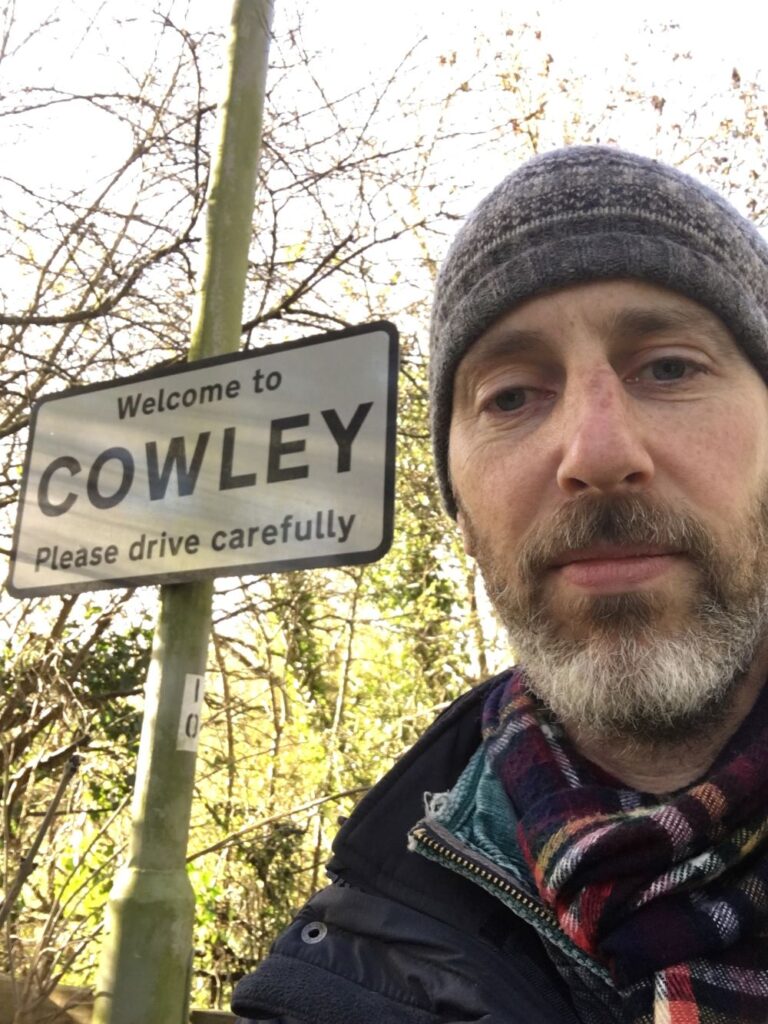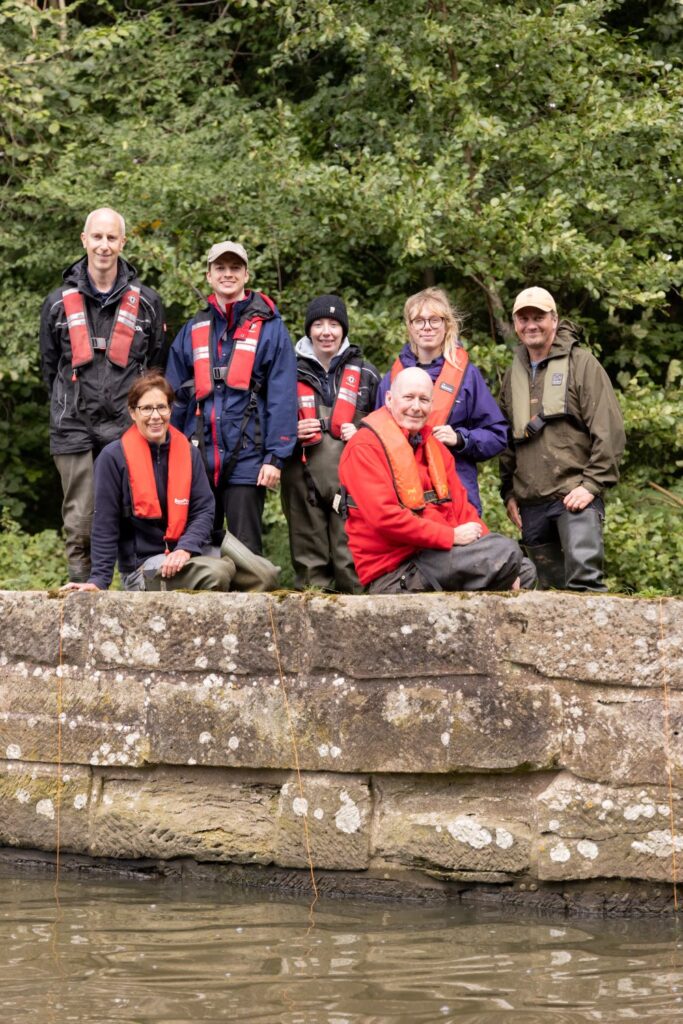People Spotlight: Meet Pete Cowley
Our People Spotlight series gives you an inside look at our technical experts around the world. This week, we are highlighting our technical director for aquatic ecology based in Nottingham, UK and providing an insight into their inspiration and work.
Pete is an aquatic ecologist with 13 years of experience, following a 10-year stint as a science and biology teacher. He has worked in a variety of roles in terrestrial and aquatic ecology, settling as Aquatic Ecology Lead for AECOM in 2017. Pete specializes in environmental assessments of the water environment, including water quality, aquatic flora, and fauna such as white-clawed crayfish and aquatic habitats.
At AECOM, Pete leads a team of over 20 aquatic ecologists covering all aspects of aquatic assessments — laboratory analyses, boat-based surveys, and support, feeding into multi-disciplinary environmental assessments.
What inspired you to join the industry?
I have a lifelong interest in wildlife, ecology and the water environment. I am fascinated by all aspects of aquatic ecology – aquatic ecosystems are the veins and arteries of the natural world, distributing water and nutrients, providing migratory pathways, enriching the floodplain, and providing humans with recreation and incredible landscapes. It is therefore our responsibility to protect and maintain them.
I have a lifelong interest in wildlife, ecology and the water environment. I am fascinated by all aspects of aquatic ecology. I am driven to achieve positive outcomes for the natural environment, and the plants and animals critical to the world’s ecosystems.”
Having made the decision to leave teaching to pursue a career in Ecology, I completed my Master of Science in Conservation Biology. Since then, I have worked in ecological consultancy. I am driven to achieve positive outcomes for the natural environment, and the plants and animals critical to the world’s ecosystems.
What is your favorite AECOM project that you’ve worked on and why?
I have worked on the Grand Union Canal and Minworth water transfer projects for Affinity Water and Severn Trent Water since September 2020, and continue to do so. These are large-scale water resource projects with complex multi-disciplinary environmental assessments, which I coordinate. It has been rewarding to engage the Environment Agency and Natural England on behalf of our clients to maintain the focus of assessments at each stage of the projects and inform the project and mitigation design to ensure positive outcomes for the environment.
The water industry is facing important challenges currently, including the distribution of water resources to supply an expanding population, and protecting our aquatic ecosystems from pollution inputs including human waste. I am proud to be supporting our clients in achieving these goals.
I’m also gearing up to present at the upcoming River Restoration Conference that will take place from 24-26 April in Wales. I love to educate and present on key topics at events, and this one will be a workshop about Biodiversity Net Gain (BNG) assessment. BNG is now mandatory for Town and Country Planning Act applications, with a target to achieve a 10 percent net gain for all such applications, which include for example highway projects, upgrades on water treatment works sites, small solar farms, etc.
In response to the growing need for BNG, we have implemented an innovative approach to utilising the outcomes of River Condition Assessment to make appropriate enhancement recommendations to achieve net gain for watercourses. The results of Modular River Physical (MoRPh) surveys feed into an Enhancement Modeller Tool, developed by AECOM, with the aim of identifying site-specific objectives to achieve ecological enhancement, tailored to the specific BNG objectives of the project.
The Enhancement Modeller Tool can present options for a range of projects. These can include reducing vegetation management in the riparian zone, installing fencing along the riparian zone to reduce the impacts of agriculture, increasing the diversity of channel and marginal vegetation and morphotypes, enhancing channel bed and hydraulic feature richness, and others. Enhancements are tailored to particular watercourse types (rivers and streams, and ditches) according to BNG trading rules, whereby mitigation needs to be applied to the same habitat type, for example, compensation for the loss of any watercourse should be on a section of watercourse with similar habitat features (in its natural state).
I have worked on the Grand Union Canal and Minworth water transfer projects for Affinity Water and Severn Trent Water since September 2020, and continue to do so. These are large-scale water resource projects with complex multi-disciplinary environmental assessments, which I coordinate. The water industry is facing important challenges currently, including the distribution of water resources to supply an expanding population, and protecting our aquatic ecosystems from pollution inputs including human waste. I am proud to be supporting our clients in achieving these goals.”
Tell us a story of how your work positively impacted the community.
For the past two years, I have been working with the Derbyshire Wildlife Trust and the National Trust on projects to relocate white-clawed crayfish to secure ‘ark sites’ in Derbyshire. My team and I have dedicated AECOM social value days to capturing and moving as many crayfish as possible. I have contributed to crayfish surveys to identify suitable donor populations for translocation, completed eDNA sampling for native and non-native crayfish, and completed crayfish capture and relocation from several sites. One of the main challenges is biosecurity, ensuring that populations of native crayfish remain safe from invasive American signal crayfish, and the crayfish plague that they carry, which can decimate populations of susceptible white-clawed crayfish. This is something I am passionate about and continue to contribute to the Midland Crayfish Partnership as it develops.
For the past two years, I have been working with the Derbyshire Wildlife Trust and the National Trust on projects to relocate white-clawed crayfish to secure ‘ark sites’ in Derbyshire. My team and I have dedicated AECOM social value days to capturing and moving as many crayfish as possible.”
Photo by Darren Cresswell Photography and the National Trust
Share a piece of career advice.
Find a profession that you’re passionate about and try to make a difference in this ever-changing world. The natural environment can be too easily taken for granted, and it’s up to us to ensure that humans continue to value and nurture the ecosystems that make life possible.











